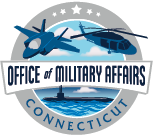At-Sea Rescue Off Sub Latest Test For Versatile V-22
By Joshua Stewart
Navy Times
August 20, 2012
It was an unusual aircraft on an unusual mission.
It was an unusual aircraft on an unusual mission.
Somewhere off the East Coast this June, an Air Force V-22 Osprey was scheduled to rendezvous with a ballistic-missile submarine.
The mission? An at-sea rescue exercise.
It was a first, according to the Navy and naval experts — a stealthy sub and the tilt-rotor aircraft had never operated in this way together.
The Osprey, flown by the 20th Special Operations Squadron, took off from Cannon Air Force Base, N.M., refueled twice in midair and headed toward the submarine Wyoming. The Osprey approached the surfaced boomer like a plane and tilted its rotors back, making them parallel to the ground like a helicopter. While hovering over the boat, it dropped its rear hatch and lowered a stretcher, sending it toward the sub's conning tower.
From there, the sub crew loaded a rescue mannequin onto the litter. The aircrew hoisted it into the Osprey, raised the gate, transitioned into airplane mode and flew back to Cannon. The mission spanned 2,600 nautical miles — and showed Ospreys can be used to take Sailors off of subs.
"The proof was demonstrated," said Cmdr. Sean McDermott, the Navy's integrated product team lead for the Osprey program at Naval Air Systems Command.
The inspiration for the mock mission came after an incident during the end of a two week training period with the carrier George H.W. Bush in December 2010. Hours away from its port in Norfolk, Va., the carrier was diverted off course when a Sailor on a submarine suffered a serious head injury and needed to be evacuated. The Navy has not identified the sub, nor has it disclosed the exact area where it was operating.
The carrier's training mission turned in to a full-fledged, two-day operation that also included the frigate Boone. Medical personnel from Naval Medical Center Portsmouth and other locations were flown out to the two ships to provide care. Bush launched an MH-60S Seahawk for the medical evacuation from the submarine, while Boone sent an SH-60B for surface surveillance. After the Seahawk took the injured Sailor onboard, he was transported to the Medical University of South Carolina for treatment.
Soon after the Bush rescue, officials realized a V-22 at Marine Corps Air Station New River, N.C., was within range and could have pulled off the mission, possibly in a much simpler way. That led to the June demonstration.
Compared with the Bush mission, the Osprey's exercise took half as long and required one aircraft.
The operation came at a time when the Navy is seeking to redefine how it incorporates V-22s in its operations.
While the Navy doesn't have any V-22s of its own, Marine Corps Ospreys operate on Navy ships.
Search-and-rescue operations for the Osprey date back to the early stages of the aircraft's development.

